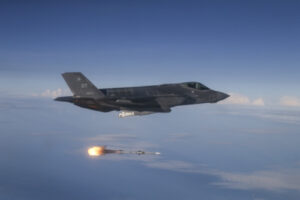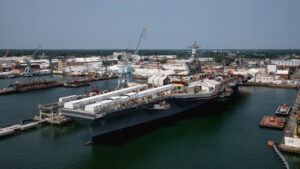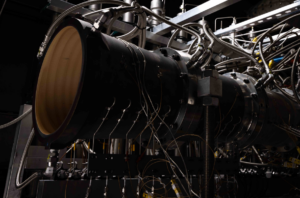Defense Daily
-
 Budget
BudgetHouse Panel Slashes Funding For Coast Guard’s Offshore Patrol Cutter
House appropriators on Sunday evening released a proposed funding bill for the Department of Homeland Security that would hack 35 percent from the Coast Guard’s troubled Offshore Patrol Cutter (OPC) […]
Tagged in: -
 Uncategorized
UncategorizedGriffin Tapped as New SRNS CEO, Replacing Retiring Carr
The Department of Energy’s prime contractor at the Savannah River Site in South Carolina has turned to a former DoE executive with more than 35 years in nuclear management to […]
-
 Air Force
Air ForceNo More Than 8 U-2 Retirements Allowed in FY 2026, House Appropriators Say
By next year, the U.S. Air Force has wanted to retire its U-2 Dragon Lady surveillance aircraft by Lockheed Martin [LMT], yet the House Appropriations Committee’s defense panel wants to […]
Tagged in: -
Monday, June 9, 2025
- Defense Watch: Golden Dome Summit Canx, APKWS, Private Ranges
- Trump Directive Wants Review Of Programs That Could Be Replaced By Drones
- GE Eyes Dual-Mode Ramjet Tech As Option To Power Army’s Potential Hypersonic PrSM Inc. 5
- Last Planned Marine Corps MQ-9A Reaper Drone Delivered
- Acting Coast Guard Commandant Wants More Counter-Drone Capacity
- Navy Acquisition Head Says Block Buy Of Fifth and Sixth Ford Carriers Could Save $5 Billion
- AFWERX Agility Prime to Take Hit in FY 2026 Budget
-
Monday, June 9, 2025
- Defense Watch: Golden Dome Summit Canx, APKWS, Private Ranges
- Trump Directive Wants Review Of Programs That Could Be Replaced By Drones
- Acting Coast Guard Commandant Wants More Counter-Drone Capacity
- AFWERX Agility Prime to Take Hit in FY 2026 Budget
- GE Eyes Dual-Mode Ramjet Tech As Option To Power Army’s Potential Hypersonic PrSM Inc. 5
- Navy Acquisition Head Says Block Buy Of Fifth and Sixth Ford Carriers Could Save $5 Billion
- Last Planned Marine Corps MQ-9A Reaper Drone Delivered
-
 Unmanned Systems
Unmanned SystemsTrump Directive Wants Review Of Programs That Could Be Replaced By Drones
President Trump last Friday directed the Defense Department to conduct a review of programs that could be replaced by drones. Within 90 days, the service secretaries are required to report […]
-
 Navy/USMC
Navy/USMCNavy Acquisition Head Says Block Buy Of Fifth and Sixth Ford Carriers Could Save $5 Billion
If the Navy procures the fifth and sixth Ford-class aircraft carriers as a block buy, it could save taxpayers about $5 billion over buying them individually, the Navy’s top acquisition […]
Tagged in: -
 Army
ArmyGE Eyes Dual-Mode Ramjet Tech As Option To Power Army’s Potential Hypersonic PrSM Inc. 5
EVENDALE, Ohio— As the Army explores a potential future version of its Precision Strike Missile (PrSM) capable of achieving hypersonic speeds, GE Aerospace [GE] has said its in-development dual-mode ramjet […]
-
 Uncategorized
UncategorizedDefense Watch: Golden Dome Summit Canx, APKWS, Private Ranges
Golden Dome Summit Axed. The Missile Defense Agency (MDA) on June 2 abruptly canceled an industry summit for the Golden Dome air and missile defense initiative. It was set to […]
-
 Homeland Security
Homeland SecurityActing Coast Guard Commandant Wants More Counter-Drone Capacity
The Coast Guard has some, but not enough, capacity for countering drone threats to the homeland from maritime approaches, the acting commandant of the service said last week. The Coast […]
Tagged in:

